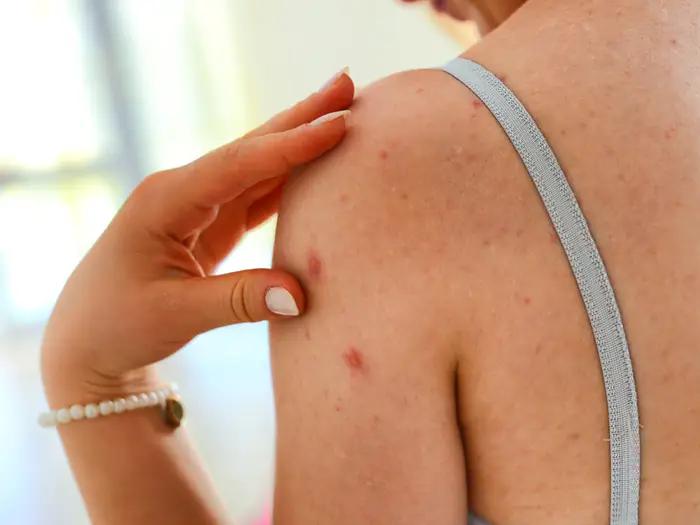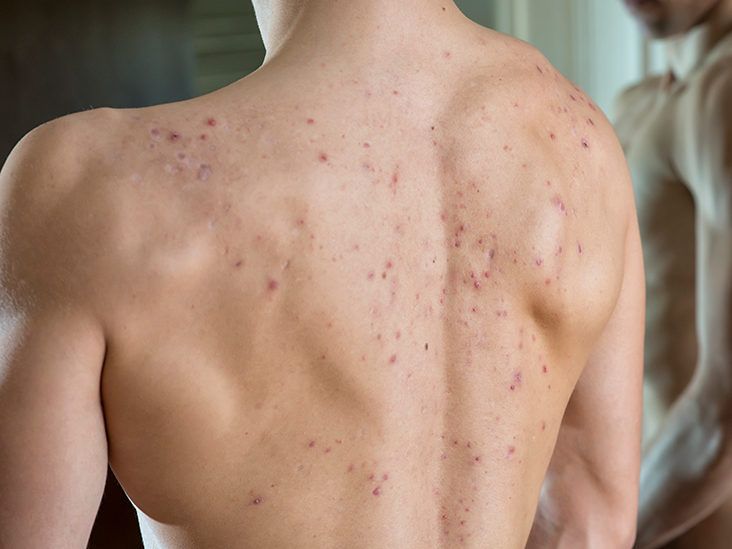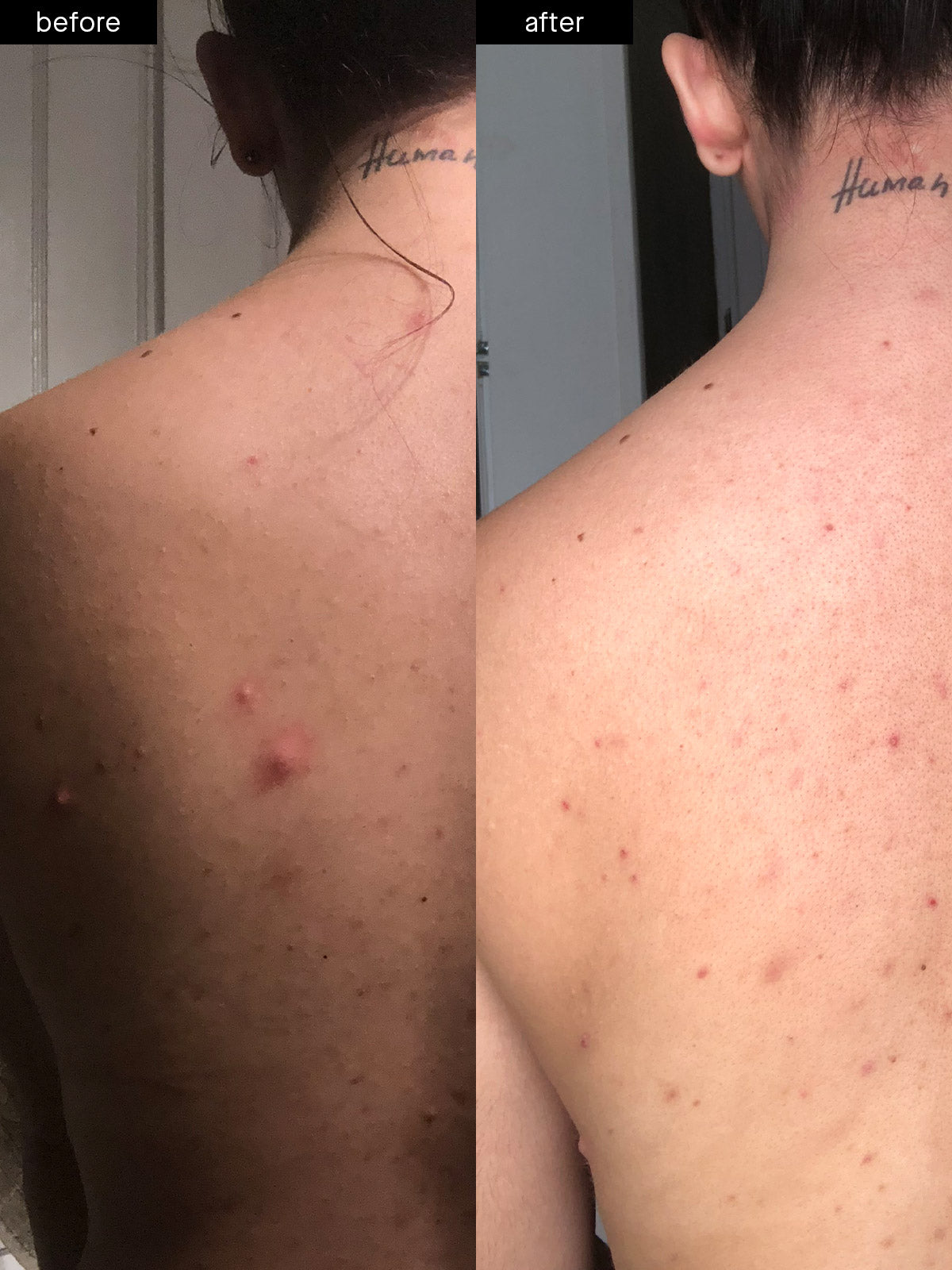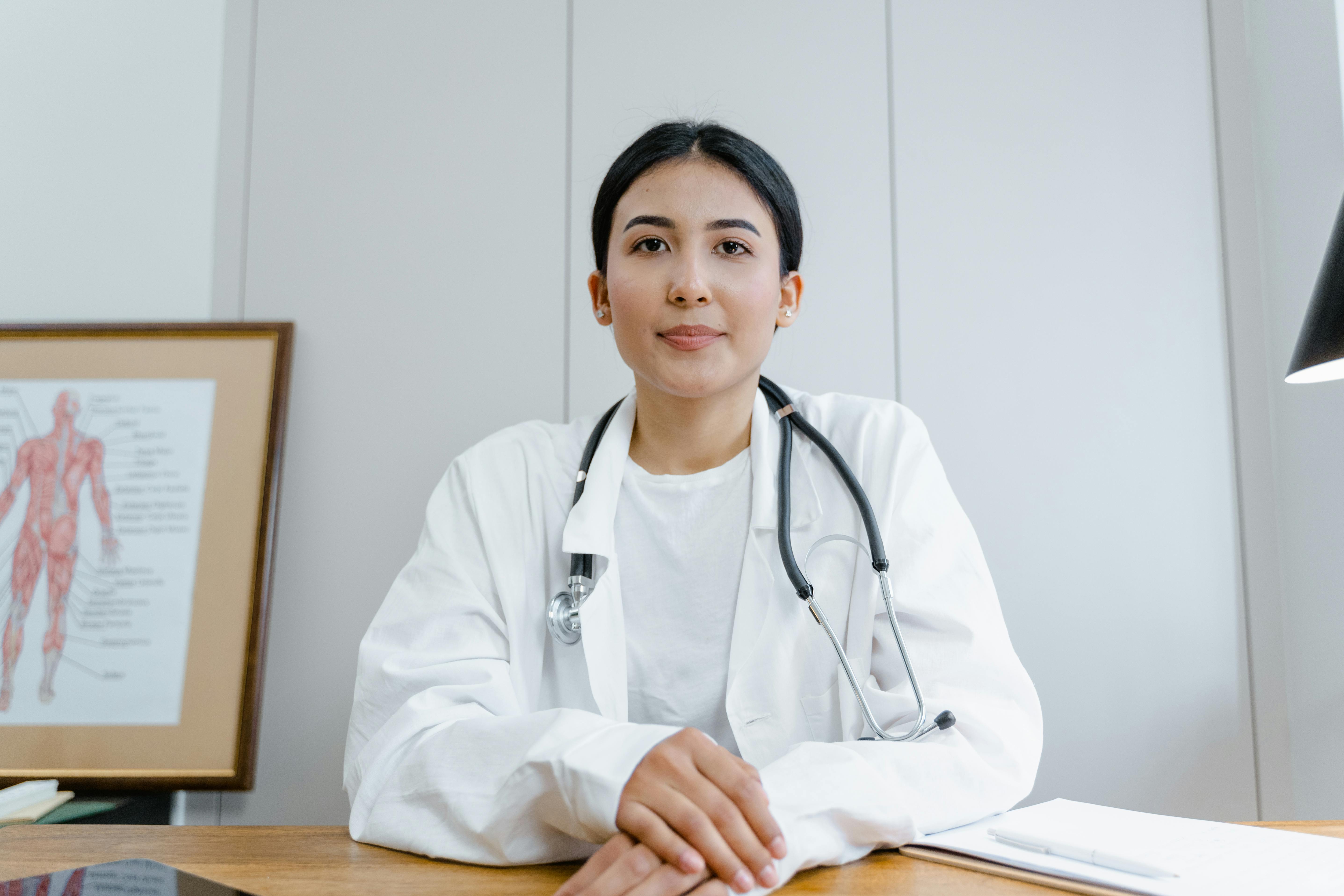Get Your AI Analysis
Personalized skincare insights
Discover your perfect skincare routine with our AI-powered analysis. Get personalized recommendations for glowing, healthy skin.
Start AnalysisFollow Us
Stay updated with the latest skincare tips, trends, and expert advice.
Spotting a sudden cluster of bumps on your shoulder—especially if it's only on one side—can be confusing and frustrating. If you're someone with melanin-rich skin and you've never dealt with facial acne, you might wonder if this is just a random breakout or something more. Drawing from real community discussions (like those on Reddit's r/Blackskincare), this guide breaks down common causes of shoulder breakouts, how to tell them apart from true acne, and practical solutions tailored for darker skin tones. We'll focus on safe, effective steps to clear it up without risking scarring or irritation, because healthy, glowing skin starts with the right info.

Understanding Shoulder Breakouts: Not Always What It Seems
Shoulder bumps often mimic acne, but they can stem from infections, irritants, or even viral issues. In melanin-rich skin, these can look like uniform red or skin-toned clusters that blend with your natural hue, making them harder to spot early. Unlike facial acne (which is often hormonal and widespread), body breakouts on the shoulder are frequently triggered by sweat, friction, or localized irritants. The key? Look for patterns like one-sided clustering, itching, or pain—these signal it's time to differentiate and treat properly.
1. Bacterial Acne or Folliculitis

What It Looks Like and Causes It? This is the most common culprit for shoulder pimples in Black skin: small, pus-filled red bumps in clusters, often itchy or tender. Caused by bacteria like Staphylococcus aureus entering hair follicles via sweat, tight clothes, or backpack straps. Friction from purses or sports gear on one shoulder can make it unilateral. In melanin-rich skin, inflammation may show as subtle hyperpigmentation rather than bright red.
Easy Solutions:
Gentle Cleansing: Wash daily with a benzoyl peroxide body wash (2-5% strength) to kill bacteria without drying out your skin. Pair with a salicylic acid exfoliant 2-3 times a week to unclog pores.
Friction-Free Habits: Switch to wide-strap bags and loose cotton tops to reduce rubbing. Shower post-workout to rinse sweat.
Targeted Treatment: Apply a tea tree oil spot treatment (diluted 1:10 with water) for natural antibacterial action—it's gentle on darker tones and less likely to cause post-inflammatory hyperpigmentation (PIH).
Home Remedy: Mix 1 part apple cider vinegar with 3 parts water; dab on bumps with a cotton pad after cleansing. Leave for 5 minutes, rinse. The acidity fights bacteria while balancing pH, but patch-test to avoid irritation.
2. Fungal Acne (Malassezia Folliculitis)

What It Looks Like and Causes It? Uniform, itchy whiteheads or red papules in tight clusters—no blackheads or cysts. Unlike bacterial acne, it's yeast overgrowth in follicles, thriving in humid, sweaty areas like shoulders. Tight gym clothes or oily hair products rinsing down one side (if you part your hair that way) can trigger it. Common in warm climates or after antibiotics, and it can persist if misdiagnosed as regular acne.
Easy Solutions:

Antifungal Wash: Use a sulfur or ketoconazole body wash (like Nizoral 1%) 2-3 times weekly to target yeast without stripping moisture—crucial for melanin-rich skin prone to dryness.
Breathable Fabrics: Opt for moisture-wicking workout gear and air-dry after showers to starve the yeast.
Oil-Free Products: Avoid heavy lotions; choose gel-based moisturizers to prevent feeding the fungus.
Home Remedy: Apply cooled green tea (brewed strong, strained) as a toner daily. Its antioxidants inhibit yeast growth and soothe itchiness, promoting even tone without bleaching risks.
3. Molluscum Contagiosum

What It Looks Like and Causes It? Pearl-like, firm white or flesh-toned bumps (1-5mm) with a central dimple, in a cluster. Viral (poxvirus), spread by skin contact or shared towels—common in kids but can hit adults via gym mats or close contact. On Black skin, they may appear subtler, blending as pinkish nubs. No pain or itch usually, but scratching spreads it.
Easy Solutions:
Don't Pick: Cover with breathable bandages to prevent spread; it often resolves in 6-12 months.
Topical Antivirals: Over-the-counter imiquimod cream boosts immunity to clear bumps faster—apply sparingly to avoid irritation.
Hygiene Boost: Wash hands often and avoid sharing razors or towels.
Home Remedy: Dab diluted apple cider vinegar (1:1 with water) on bumps nightly for 5-10 minutes. Its antiviral properties may speed healing, but stop if redness worsens.
4. Staph or MRSA Infection (Boils/Folliculitis)
What It Looks Like and Causes It? Painful, warm red lumps or boils, possibly one-sided from a cut or ingrown hair. Staph bacteria (or resistant MRSA) enters via minor skin breaks, worsened by sweat or poor hygiene. In melanin-rich skin, early signs might be darker patches before pus forms, increasing scarring risk if popped.
Easy Solutions:
Warm Compresses: Apply 10-15 minutes, 3-4 times daily to draw out infection—don't squeeze!
Antibacterial Ointment: Use mupirocin (prescription) or OTC bacitracin on affected areas.
See a Doc Early: If feverish or spreading, get cultured for MRSA; antibiotics may be needed.
Home Remedy: Mix turmeric powder with honey (1 tsp each) into a paste; apply for 10 minutes, rinse. Turmeric's anti-inflammatory curcumin fights staph naturally, and honey soothes without clogging.
5. Shingles (Herpes Zoster)
What It Looks Like and Causes It? Burning pain followed by a blistery, band-like rash on one side—often shoulder or torso. Reactivation of chickenpox virus in adults over 50 or stressed/immunosuppressed. Unlike acne, it's intensely painful with fluid-filled vesicles, not pus.
Easy Solutions:
Antivirals ASAP: Valacyclovir (within 72 hours of rash) shortens duration—consult a doctor immediately.
Pain Relief: Cool compresses and calamine lotion ease itch; OTC hydrocortisone for inflammation.
Vaccine Prevention: Shingrix for adults 50+ reduces risk by 90%.
Home Remedy: Oatmeal baths (colloidal oatmeal packets) calm the rash—grind oats, add to lukewarm water, soak 15 minutes. It's soothing and anti-itch for sensitive skin.
6. Other Common Irritants (Hair Products, Contact Dermatitis)
What It Looks Like and Causes It? Scattered red bumps or clusters from shampoo/conditioner runoff during showers, or allergens like purse straps. One-sided if you carry on that shoulder. In Black skin, it can trigger keloids or PIH if scratched.
Easy Solutions:

Rinse Thoroughly: Wash hair first in showers, clip up while body-washing.
Hypoallergenic Swap: Use fragrance-free products; test new ones on inner arm.
Barrier Cream: Apply petroleum jelly under straps for protection.
Home Remedy: Cucumber slices or juice applied for 10 minutes cools and hydrates, reducing redness from irritants.
Daily Habits for Clear Shoulders
To prevent these breakouts:
Shower Smart: Use lukewarm water; pat dry to retain moisture.
Exfoliate Gently: Body brush or AHA lotion 2x weekly—avoid harsh scrubs on melanin-rich skin.
Moisturize Right: Lightweight, non-comedogenic lotions with niacinamide to fade PIH.
Diet Tweaks: Cut dairy/sugar if hormonal; add zinc-rich foods like nuts.
Sun Protection: SPF 30+ body lotion to prevent darkening of spots.
Home Remedies to Avoid
Steer clear of:
Popping Bumps: Risks scarring and spread (especially viral).
Harsh Scrubs: Worsens PIH in darker tones.
Lemon Juice: Can irritate and hyperpigment Black skin.
Toothpaste: Dries out and inflames follicles.
Undiluted Oils: Feeds fungal issues.
Building Your Shoulder Care Routine
Morning: Gentle body wash + lightweight moisturizer + SPF.
Evening: Antifungal/benzoyl wash if needed + soothing aloe gel.
Weekly: Exfoliate + mask (e.g., clay for detox).
Track changes in a journal; if no improvement in 1-2 weeks, see a derm.

